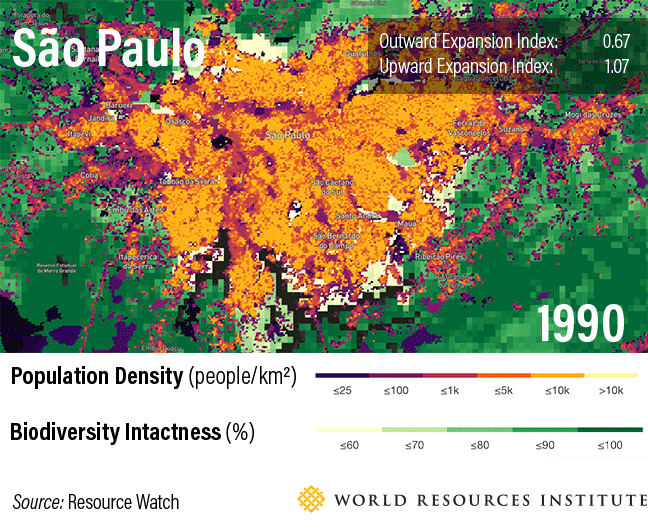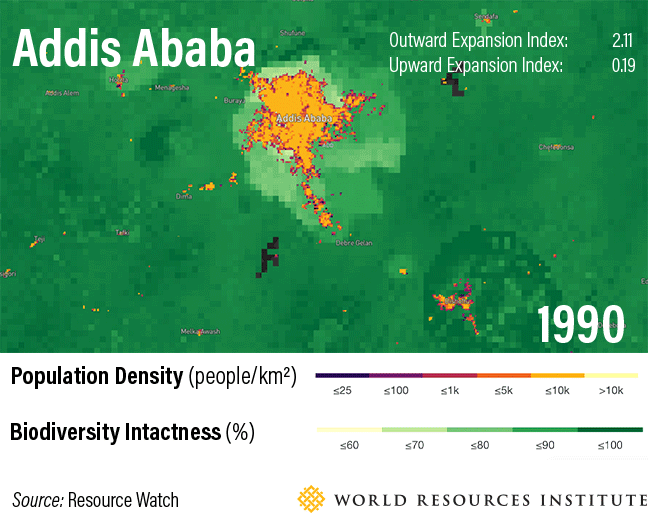
Cities can choose how they grow by directing investment and policies in specific ways. Those cities that have more upward growth relative to outward growth, for example, are better able to provide services and opportunities to their residents because development occurs in already well connected and serviced locations. They also have less negative impact on biodiversity near the city since encroachment into biodiversity hotspots is limited.
São Paulo, for example, has a more balanced ratio between its Outward and Upward Expansion. Between 1990 and 2015, despite growing by 6 million people, most of the city’s physical growth has occurred on the vertical axis through taller buildings and more compact neighborhoods.
Compare this to Addis Ababa, where outward expansion has outpaced upward expansion by a very wide margin. As a result, increasing areas of potential conflict between human population and biodiversity are much more obvious.

The significant outward growth of Addis Ababa also means that the growing areas of the city are less likely to have access to core services, like water and electricity, and the costs of providing them will be higher for the city. This exacerbates inequality, as many people have to rely on expensive, unsafe and unreliable informal service provision instead.
Research shows that cities like São Paulo have important policies and incentives in place that direct development to locations within the city rather than to its periphery.
Read more about managing urban expansion by downloading Upward and Outward Growth and explore the data yourself on Resource Watch.
Eric Mackres is a Data & Tools Manager for Urban Efficiency and Climate with WRI Ross Center for Sustainable Cities.
Elise Mazur is a Research Analyst on WRI’s Resource Watch team.





